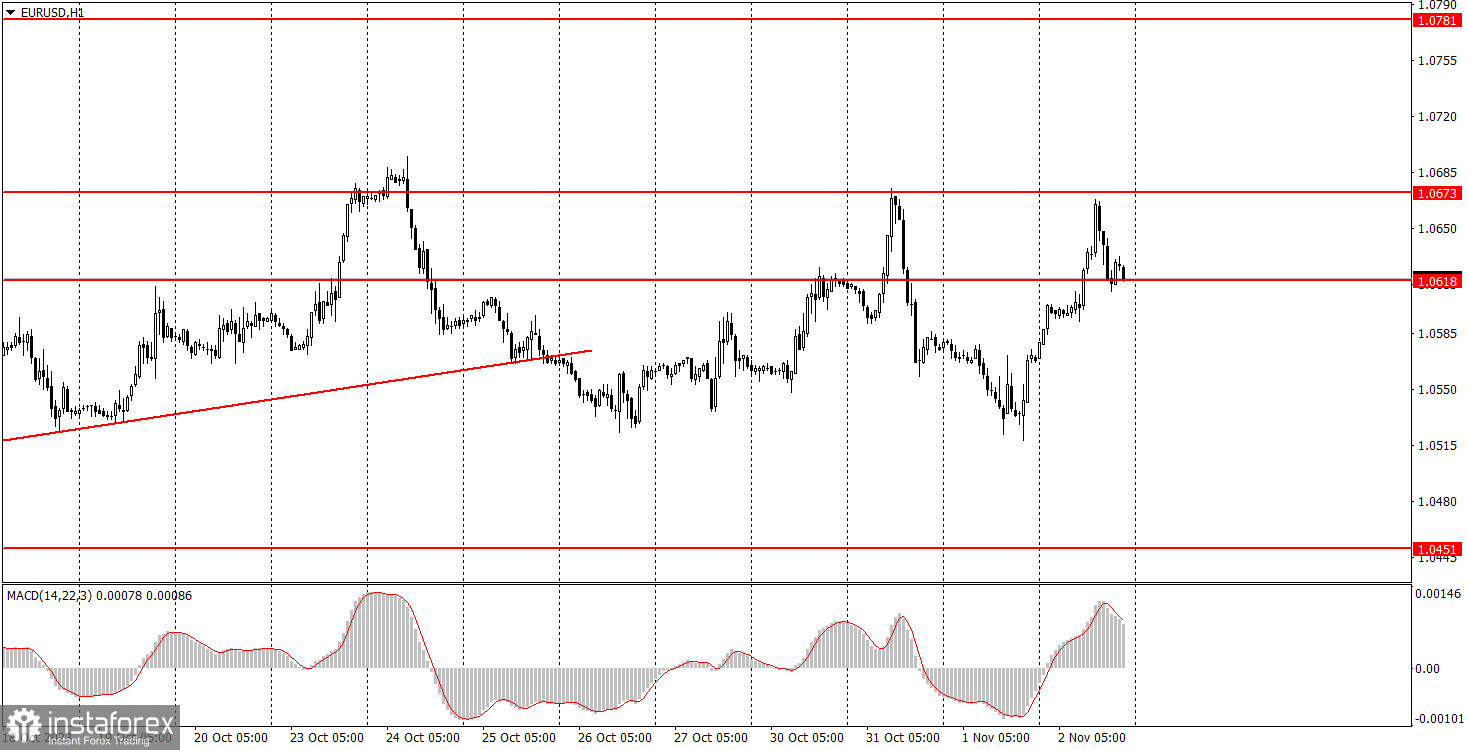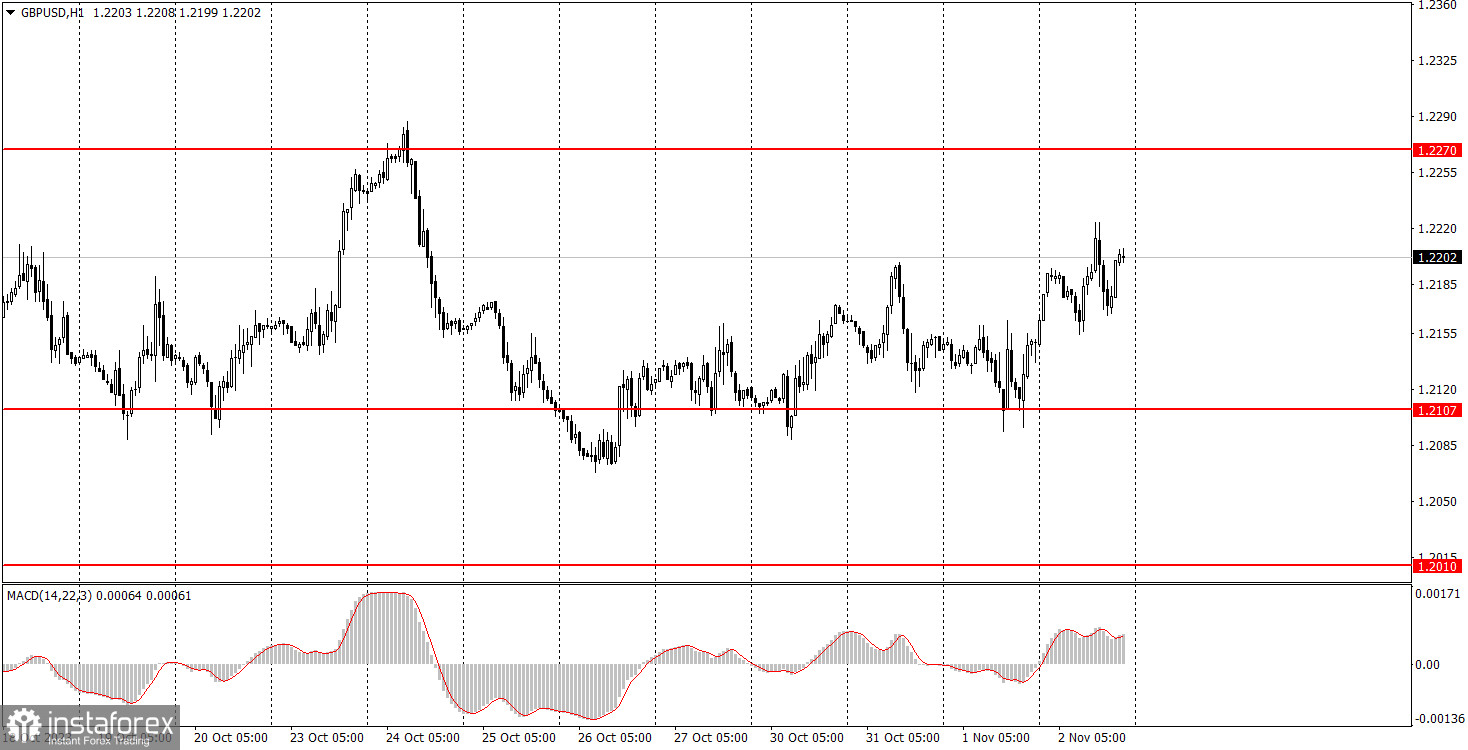Analysis of macroeconomic reports:

Friday has enough macroeconomic events for both pairs to have an active day. Unfortunately, there were plenty of events in the last couple of days, but all we saw were movements with average volatility within the flat trend. Therefore, it would be quite challenging to hope for the market to wake up and form a trend. Nevertheless, the US is set to release three critical reports: NonFarm Payrolls, unemployment, and the ISM index for the services sector. Each of these reports is capable of provoking a strong reaction. If the market reacts positively to the data, at least the EUR/USD pair may break out of the flat. If it's the opposite, we will simply see a new leg of the downward movement within the flat.
Analysis of fundamental events:
There is nothing to highlight among Friday's fundamental events. This week, the Bank of England and the Federal Reserve held their meetings, while the European Central Bank had its meeting last week. Central bank heads have already conveyed all the information they deemed necessary to the market. It would be strange to expect changes in their stance a few days after the meetings. Nonetheless, there are no important speeches scheduled for today.
General conclusion:
Market participants can keep an eye on three important reports from the United States. Therefore, in the afternoon onwards, it would make sense to expect strong movements in both pairs. However, they could turn out to be chaotic and have no impact on the overall trend. And as a reminder, the current trend is flat.
Basic rules of a trading system:
1) Signal strength is determined by the time taken for its formation (either a bounce or level breach). A shorter formation time indicates a stronger signal.
2) If two or more trades around a certain level are initiated based on false signals, subsequent signals from that level should be disregarded.
3) In a flat market, any currency pair can produce multiple false signals or none at all. In any case, the flat trend is not the best condition for trading.
4) Trading activities are confined between the onset of the European session and mid-way through the U.S. session, post which all open trades should be manually closed.
5) On the 30-minute timeframe, trades based on MACD signals are only advisable amidst substantial volatility and an established trend, confirmed either by a trend line or trend channel.
6) If two levels lie closely together (ranging from 5 to 15 pips apart), they should be considered as a support or resistance zone.
How to read charts:
Support and Resistance price levels can serve as targets when buying or selling. You can place Take Profit levels near them.
Red lines represent channels or trend lines, depicting the current market trend and indicating the preferable trading direction.
The MACD(14,22,3) indicator, encompassing both the histogram and signal line, acts as an auxiliary tool and can also be used as a signal source.
Significant speeches and reports (always noted in the news calendar) can profoundly influence the price dynamics. Hence, trading during their release calls for heightened caution. It may be reasonable to exit the market to prevent abrupt price reversals against the prevailing trend.
Beginning traders should always remember that not every trade will yield profit. Establishing a clear strategy coupled with sound money management is the cornerstone of sustained trading success.






















